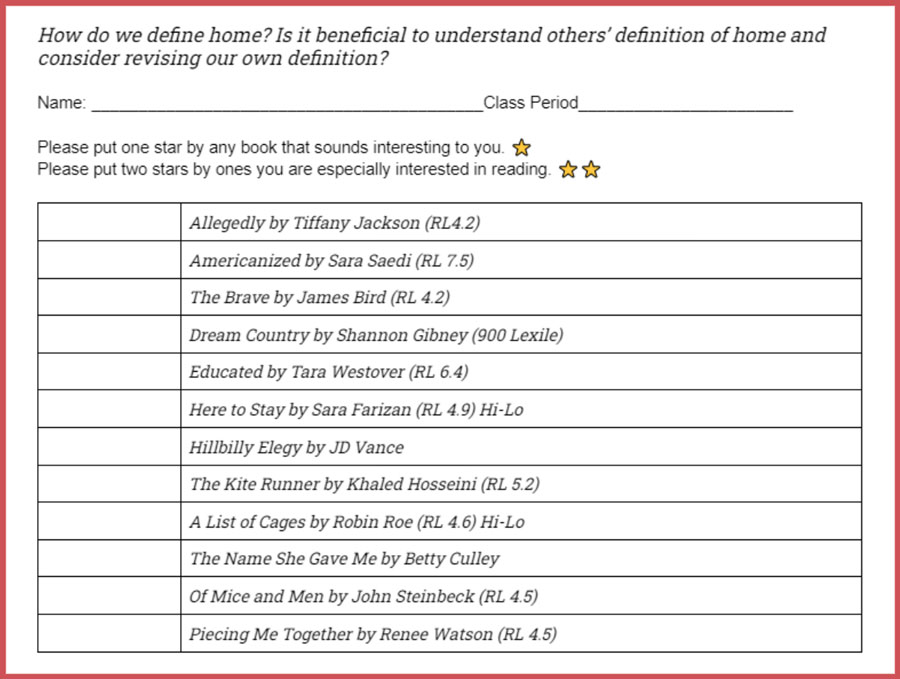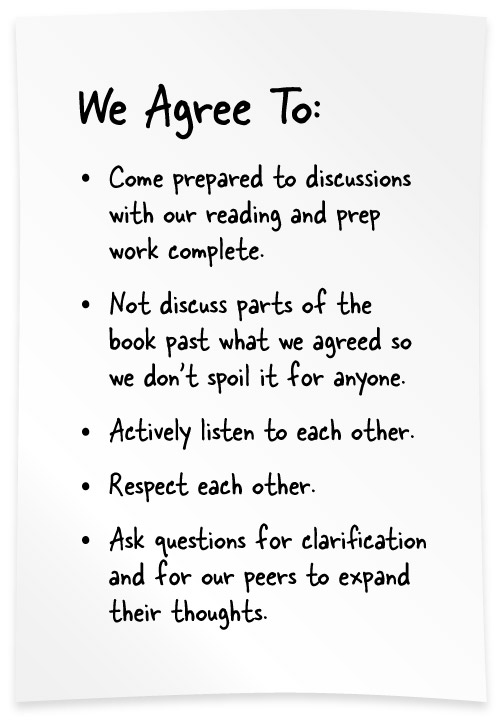When I first introduced book clubs to my sophomores more than a decade ago, I had no idea what I was doing. I just knew that I needed something different than continuing to have us all trudge through a whole-class novel again. I also didn’t have a classroom library or book room filled with choices for small group reading. But I knew I wanted to try this. So, I gathered choices for my two sections of English/Speech 10 by:
- Heading to our book room to see if there were any books used in our junior/senior contemporary literature elective I might be able to use with my 10th graders. I found a few titles and grabbed 6 copies of each (after clearing it with my colleague who uses the books, of course!).
- I then went to our school library and sat down with our librarian to see what we could secure through our school collection, interlibrary loan, and the public library. This was the jackpot! We secured 4-6 copies of at least 8 titles.
I now had 11 choices for students ranging in reading level, genre, and subject matter. Then I thought, what if I grab a few of the whole-class novels we have used in the past but weren’t planning to this year—Lord of the Flies, A Separate Peace, and Fahrenheit 451 got added to the list with the bonus of unlimited copies. When students get the opportunity to choose a book to read, it has a different effect than when assigned a book to read.

Books in hand, I started the process of developing the unit. Because I couldn’t intentionally choose books around an essential question, nor did they all follow the same genre, I chose to focus on learning goals related to small group communication, reading comprehension, and developing a persuasive message. To see a sample book club unit around the central question “How do we define home?” click here.
To ensure student ownership in creating your own book clubs, I have five tips for you!
1 Sell Student Choice
When asking students to choose a book, we want to be sure to set them up for successfully picking a book they will be able to read independently, enjoy, and have something to discuss with a group of their peers. I like to have students browse the selections—asking them to go ahead and judge the cover, read the back or book jacket, and look up reviews and book trailers. Independent inquiry helps them to come to their own judgement rather than being swayed by my persuasive book talk skills. This gives them ownership over their choice. Ultimately, I put the book club groups together, though. Students weigh in on books they are interested in reading, peers they can see themselves having productive conversations with, and classmates they think they might take away from a successful experience. Here is a sample form I use with students.

2 Coach Students to Read Independently
For students to read independently, we need to make sure they are reading a book that is on the easy side of “just right.” Even if this means they finish early and need to pick up another book to read for reading days, it is best to have students in books they can easily comprehend. Students will be able to think more critically and have better conversations if they aren’t struggling to understand the vocabulary in the text. Once students are reading independently, we can engage them in thinking about their reading through a readers’ response journal or other thinking routines. I especially like the tools put out by Project Zero by Harvard’s Graduate School of Education.

3 Give Students Control
I ask students to develop their own reading and practice discussion schedule. They decide when their two practice book club discussions will occur on a calendar I provide them, here is an example, as well as which pages of the book will be discussed for each practice discussion. The final graded book club discussion is open to discussing the entire book. Groups develop common agreements that often include statements like:








